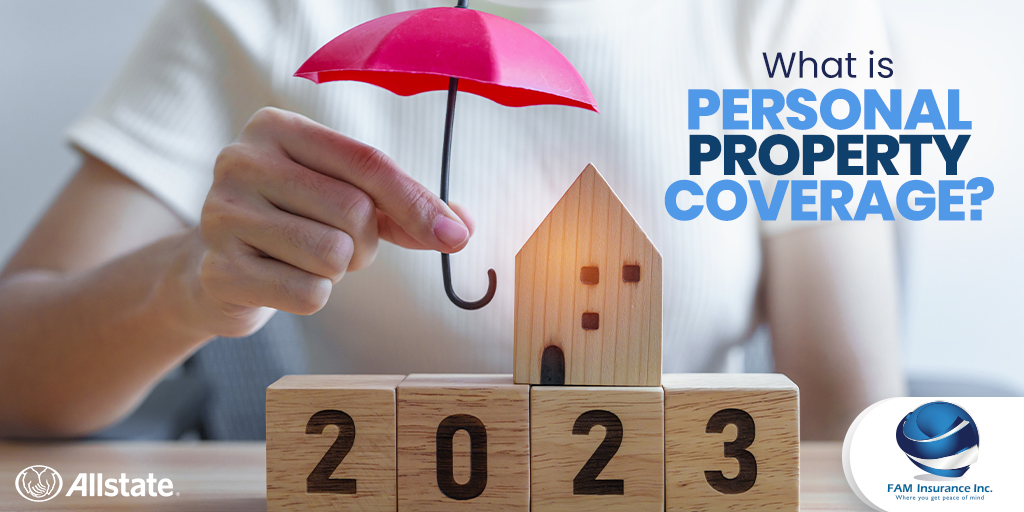Personal property is the stuff you own — furniture, electronics and clothing, for example. Whether you own a home or rent an apartment, insurance policies typically include personal property coverage. This type of coverage helps pay to repair or replace your belongings after a covered loss, such as theft or fire. Here are some things to consider when it comes to protecting your belongings.
How much coverage do I have?
There are two types of personal property coverage: replacement cost and actual cash value. A replacement cost policy typically pays the dollar amount it will take to buy a new item at the time of a claim. An actual cash value policy factors in depreciation to provide reimbursement based on the current value of an item. It’s also important to know that personal property coverage usually has certain limits on what it will pay to replace an item or category of items.
Does renters insurance cover my belongings?
A common misconception among renters is that their landlord’s insurance policy will cover their belongings. While landlord insurance typically helps protect the residence against certain risks, that coverage typically does not extend to a renter’s belongings. The personal property coverage in a renters policy helps cover your belongings, including things like cameras and laptops, up to the coverage limits in your policy.
Does condo insurance cover my belongings?
A typical condo policy includes coverage for the owner’s belongings against certain risks, such as fire or theft. So, while a condo association’s insurance may help protect the physical structure of the building and the areas shared by multiple owners, that protection likely does not extend to the stuff inside a unit. A condo owner’s insurance policy usually helps protect belongings, such as furniture, computers or clothing, against a covered loss. Again, coverage limits will apply. Your insurance provider can help explain your coverage terms and limits so you can decide whether you have the proper protections in place.
Does homeowners insurance cover my personal property?
In addition to providing dwelling and liability protection, most homeowners insurance policies include coverage for personal property — up to the limits outlined in the policy. So, if your home is damaged by a covered peril — fire, for instance — homeowners insurance typically helps pay to repair damage not only to the home’s structure, but it also may help replace the belongings inside. Coverage is subject to the terms and limits outlined in your policy, so be sure to read your policy or ask your insurance provider if you have any questions.
Does insurance cover lost items?
Typical homeowners, renters and condo policies do not provide coverage for lost items. If a valuable is stolen, you’ll likely find insurance will help cover the loss. However, if you misplace a belonging or leave it behind in a hotel room, for example, insurance usually will not cover the loss. However, scheduled personal property — an add-on protection that can be purchased for specific items — may help cover lost items. Contact your insurance provider to learn about the specifics of your coverage.
Is jewelry covered by insurance?
While jewelry is typically considered a type of personal property, it’s important to consider whether your coverage limits are high enough to protect the pieces you value most. Often, insurance policies will come with sub-limits for certain kinds of belongings, such as jewelry. So, while your overall personal property coverage limits are higher, coverage for jewelry may be more limited. Be sure to check your policy or ask your insurance provider about what kind of coverage you have in place for jewelry.
What is scheduled personal property?
While your homeowners, renters or condo policy may help provide protection for your personal belongings, that coverage typically comes with sub-limits for certain types of property — and sometimes there are even limits for each item. Your insurance provider can help you decide whether you may benefit from “scheduling” certain items, which means purchasing separate coverage to further protect specific high-value items, such as jewelry, art or musical instruments.
What isn’t protected by personal property coverage?
Personal property coverage kicks in when belongings are damaged by certain risks. It’s important to note that not all risks are covered by a standard insurance policy. For instance, if your belongings are damaged in a flood, the personal property coverage in a homeowners, condo or renters insurance policy most likely would not provide reimbursement. However, if you have a separate flood insurance policy, you’d likely be able to file a claim for flood-damaged items in your home. Read your policy or contact your insurance provider to learn what types of risks your insurance may or may not help cover.
The value of your belongings can really add up, so it’s important to know what kind of coverage you have in place if the unexpected occurs.

